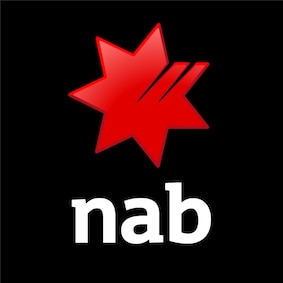Secured vs. unsecured personal loans | Types of loans - NAB
What we’ll cover in this guide
In this article, we’ll explain secured and unsecured personal loan types with their features, benefits and considerations, different ways to use these loans as well as variable and fixed rate personal loans to help you make an informed financial decision that is tailored for your needs.
Types of personal loans
Personal loans provide borrowers a fixed lump sum that they then repay over a pre-determined period of time. The amount, interest rate and repayment terms are agreed when a loan offer is made by the lender and the customer accepts the loan. Borrowers having the flexibility to choose a loan term that suits their financial goals. This is typically between one to seven years. Most personal loans are one of two types – secured or unsecured.
What is an unsecured personal loan?
An unsecured personal loan provides you with the flexibility to meet a range of needs like consolidating debts, covering medical expenses, buying a car, financing home improvements or even planning a dream vacation. It doesn’t require any security for the loan.
What is a secured personal loan?
Secured personal loans, on the other hand, require collateral, like a home or car, to secure the loan. This collateral works as a safety net for the lender, reducing risk by offering them an asset if the borrower can’t pay back the loan. If the borrower doesn’t make the agreed repayments, the lender can repossess the asset.
Benefits of secured and unsecured personal loans
Personal loans can empower you to pursue your financial goals and manage unexpected expenses with confidence. Here are a few benefits to consider for secured and unsecured loans.
Unsecured personal loans
- Get quick access to funds without needing to provide collateral, making them accessible to individuals who may not want to use their assets as collateral.
- Since unsecured personal loans are so flexible, you can use the funds for diverse purposes, whether that’s consolidating debts, covering one-off expenses such as weddings or medical bills, or funding renovations.
- Redraw is available on variable rate loans, when you’re ahead on repayments, giving the extra flexibility of accessing funds when needed.
Secured personal loans
- Lower interest rates: Typically secured loans are less risky for lenders and so may come with lower interest rates compared to unsecured loans, potentially saving you money over the loan term.
- Higher loan amounts: Secured loans often offer higher borrowing limits since the loan amount is secured by an asset like a car or home.
Different ways to use a personal loan
A personal loan can help you meet a wide range of needs or requirements.
- Car loan: Get on the road sooner with a dedicated secured car loan or an unsecured personal loan to buy a new or used car. You’ll be able to own your vehicle straight away and avoid extra fees or commissions on dealer finance.
- Debt consolidation loan: A debt consolidation loan can help reduce the stress of managing multiple payments with different providers by rolling these debts into one. All you need to do is manage one regular repayment. This also gives you a better picture of when you’ll be debt free. Learn more about why it’s worth consolidating your debt.
- Wedding loan: Getting your finances organised in advance can be a hassle-free way to plan and manage your wedding. A personal wedding loan offers both flexibility and certainty to ensure you can enjoy your special day.
- Travel loans: If you’re in need of extra cash to spend on a holiday – a travel loan could help you on your next big getaway. These loans can help cover costs such as tickets, accommodation, tours and transport.
- Medical loan: The cost of unforeseen medical or dental procedures can often put a big dent in your wallet. For these moments, medical loans could provide relief, if the procedure isn’t covered under Medicare, or you have out of pocket insurance costs.
- Home renovation loan: Whether you’re looking to redecorate, install a pool or carry out extensive home improvements – a home renovation loan can make your dream home come to life.
- Education loan: Cover your education costs, including on-campus housing, tuition fees or other equipment and materials for your program. Our education loans offer flexible borrowing terms and no late payment fees.
Ready to apply for a personal loan?
Apply online and get an instant response.
Interest rate types on personal loans
The interest rate of an unsecured personal loan is usually determined by a number of factors including your credit score and credit history, your banking history and the information you provide in your loan application such as your income, expenses, assets and debt. Usually, the better your credit score, the lower your interest rate. Find out more about credit-worthiness and how to improve your credit score.
For a secured personal loan – the interest rate can also depend on the value and type of collateral provided. For both types of loans, credit history, income stability, loan amount and loan term will be considered to determine your interest rate.
Difference between a fixed and variable rate personal loan
In a fixed-rate personal loan, the interest rate doesn’t change over the loan term. This gives certainty that your repayments won’t change over time making it easier to budget.
With a variable rate personal loan, the rate may go up and down during the term of the loan, based on market conditions.
The upside of a variable rate is you’ll be able to redraw on your loan if you are ahead on your repayments, which comes in handy if you need money unexpectedly.
With both our fixed and variable rate loans you’ll be able to make additional payments and repay the loan early without incurring fees. Learn more about the key differences in these personal loan rates and terms.
Personal loan calculators
Before you apply, see what you can afford to borrow and repay with our helpful calculators.
Personal loan repayment calculator
Calculate what your repayments could be with a NAB Personal Loan.
Personal Loan borrowing power calculator
Estimate what you can afford to borrow and how much the repayments will be.
Debt consolidation calculator
Understand how your repayments could change by consolidating your debts.
How to apply for a personal loan?
- Whether you’re applying online or in-person, you’ll need to provide specific documents and information , including IDs, employment details and financial information including income, debts, assets and expenses.
- Your lender will assess your application by checking your creditworthiness. This will include reviewing information from your personal loan application, credit reporting bodies, your repayment history.
- Once you’ve submitted your application, you’ll know if you’ve been conditionally approved with an indicative interest rate and repayment amount.
- After verifying your information, the bank will send you the loan documents with the interest rate and other important information.
Learn more about how to apply for a personal loan.
Explore other life moments
Choosing between a credit card or personal loan
Key differences between credit cards and personal loans.
How to pay off your debt
Read our tips to help you pay off your debts.
Five practical ways to beat financial hardship
Steps you can take to get on top of things – and take charge.
Related products and services
Manage your personal loan
Our how-to guides will help you manage your personal loan online with ease.
How NAB Personal Loan repayments work
Learn how your personal loan repayments work and how to manage them.
Financial assistance
Needing to reach out for financial assistance can happen to anyone. You’re not alone. We’re here to help. Learn more about our financial assistance.
Get in touch
Customer Support Tool
Solve problems quickly online with our easy-to-follow guides. Simply select a topic and we’ll direct you to the information you need.
Contact us
Explore our personal banking contact information and get support with a wide range of products, services and topics.
Visit a NAB branch
Visit us in person at your nearest NAB branch or business banking centre.
Important information
Apologies but the Important Information section you are trying to view is not displaying properly at the moment. Please refresh the page or try again later.
The information contained in this article is intended to be of a general nature only. It has been prepared without taking into account any person’s objectives, financial situation or needs. Before acting on this information, NAB recommends that you consider whether it is appropriate for your circumstances. NAB recommends that you seek independent legal, financial, and taxation advice before acting on any information in this article.





